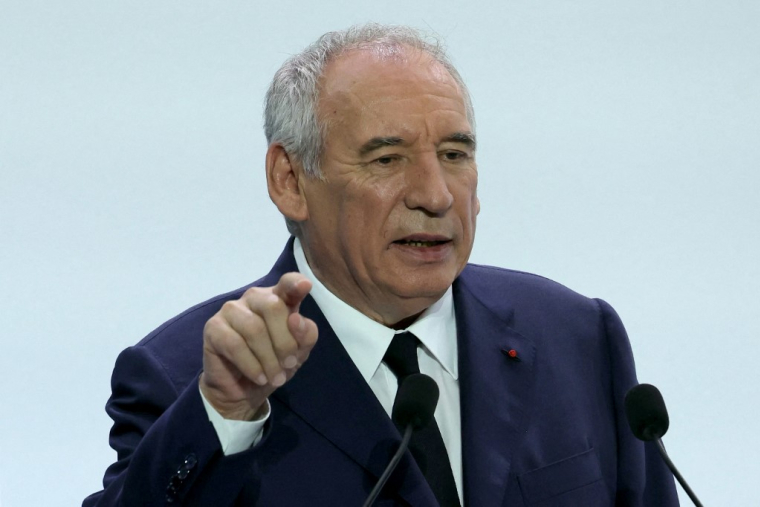A new set of trade measures and political signals has stirred a complex debate across Europe, as the United States prepares to implement a 15% tariff on European exports, with carve-outs for certain strategic sectors such as aerospace. The move comes in the wake of a high-profile accord described by European and US leaders as a turning point in transatlantic ties. European leaders and ministers responded with concern and a call for recalibration, underscoring the tension between immediate protections for industries and longer-term ambitions for free and open trade. The interplay between tariff risk, energy commitments, and potential investments creates a dense policy landscape that both tests political resolve and shapes economic strategy on the continent. In this context, EU officials warn against overreliance on a single axis of cooperation, urging diversification of supply chains, markets, and routes while defending European competitiveness in global markets. The questions now center on how to manage the immediate consequences of tariff imposition, how to interpret the energy and investment commitments attached to the deal, and how to safeguard European interests in services, digital economies, and key industrial sectors.
Reactions at the Highest Level: A Contested Turn in Transatlantic Engagement
The announcement of the agreement between European Union policymakers and American counterparts has prompted a mix of solemn reflection and political admonition from European leaders. The atmosphere was described by some as tense and cautionary, with questions about the balance of concessions and benefits for European economies. In particular, a prominent European leader voiced strong reservations, characterizing the moment as a stark turning point for the continent. The statement framed the situation as a "dark day" for Europe, a time when a coalition of free peoples—united to safeguard shared values and protect collective interests—appears to concede to submission rather than uphold autonomy. This sentiment underscores the moral and strategic tension pervading public discourse: on one hand, the desire to preserve a cooperative relationship with a major trading partner; on the other, the imperative to defend the strategic advantages of European industry and the integrity of European markets.
Within this narrative, the leader’s remarks conveyed both disappointment and a determination to scrutinize the terms of the accord. The phrasing emphasized a broader concern that such an agreement, while potentially stabilizing certain economic actors in the very short term, could undermine long-standing commitments to openness, fair competition, and the resilience of European supply chains. The rhetoric drew a sharp contrast between the aspirational aim of a transatlantic partnership and the practical realities of trade policy in an era of strategic rivalry. The emphasis on “submission” signaled a warning against tolerating terms that could erode European economic sovereignty or diminish leverage in ongoing negotiations with major global players. While the post framed the issue within a broader debate about values, interests, and shared responsibilities, it also highlighted a call to safeguard national and regional choices that preserve Europe’s strategic autonomy.
In this context, the public discourse surrounding the Turnberry process—an agreement reached in the United Kingdom during a period of intensified geopolitical realignments—was interpreted by many observers as a test case for how Europe negotiates with a principal ally facing its own domestic political dynamics. The rhetoric therefore served not only as a critique of one particular deal but also as a broader articulation of Europe’s stance toward economic sovereignty and safeguarding competitive integrity. The immediate takeaway for policymakers and markets alike is the need for a careful, strategic approach to future negotiations. The emphasis was placed on ensuring that any alliance remains compatible with core European interests, including the protection of critical technologies, the maintenance of robust manufacturing ecosystems, and the preservation of access to essential services markets. This tone set the stage for a broader debate about how Europe can balance diplomacy, defense of its industries, and the modernization of its trade policy to respond to evolving global conditions.
The article at hand provides a snapshot of a moment when political rhetoric and economic policy intersect, revealing the layers of complexity involved in negotiating with a major external partner. It also highlights the divergent voices within European leadership, as different ministers expressed concerns about the balance of benefits and costs and called for a targeted approach to preserving competitiveness. The discussions that followed focused on a set of core questions: how to measure the fairness of the deal for European consumers and industries, what adjustments could be made to ensure a more balanced outcome, and how to leverage the instruments at the EU’s disposal to protect strategic sectors without undermining broader liberal trade principles. Taken together, these exchanges illustrate the ongoing recalibration of Europe’s trade strategy in a world where economic interdependence and strategic competition increasingly overlap.
Tariffs and Investment Promises: What the UE/US Accord Specifies
The core economic provisions of the agreement set out a 15% tariff regime that the United States would apply to European goods, marking a significant shift in the tariff landscape between two deeply integrated economies. This tariff framework is explicitly designed to apply to a broad swath of European exports, signaling an intent to recalibrate the bilateral commercial balance in favor of a more balanced, mutually beneficial arrangement over time. The arrangement, however, includes exemptions for certain strategic sectors deemed critical to European industrial capability, with aerospace singled out as a sector receiving special carve-outs to protect high-value manufacturing, innovation ecosystems, and global supply chains that rely on specialized technology and skilled labor. The decision to preserve access for aerospace and other strategic industries reflects both a recognition of Europe’s competitive strengths in high-tech manufacturing and a caution against destabilizing essential economic sectors that underpin advanced frontier research and export potential.
Alongside tariff commitments, the EU-US accord articulates a substantial energy procurement plan and an investment pledge that collectively aim to shift energy sourcing patterns and stimulate cross-Atlantic capital flows. The European side commits to purchasing up to 750 billion dollars worth of energy, with a clearly stated objective to replace gas supplies from other sources, including those previously dependent on external, less stable suppliers. This energy purchase target is framed as a strategic transition measure, intended to diversify Europe’s energy mix, bolster energy security, and reduce exposure to volatile external markets. The counterpart commitment includes a substantial revenue and investment target, namely 600 billion dollars directed toward investments in the United States. The language surrounding these investments emphasizes the potential to stimulate American economic activity and create a reciprocal stimulus for European demand, while also raising questions about the long-term distribution of benefits, including how much of the investment would translate into tangible European gains, market access, and reciprocal improvements for European firms operating in the United States.
Within this framework, several ministers and officials offered cautious commentary, underscoring that while the agreement includes notable mechanisms for cooperation and economic stimulus, it does not automatically translate into a perfectly balanced arrangement. The dialogue among policymakers reflected a nuanced understanding that short-term stability might come at the cost of certain concessions, and that the long-term health of European industry could depend on additional structural reforms and targeted policy instruments. The decision to pursue an agreement with such an ambitious energy and investment component suggests a strategic aim: to strengthen European resilience through diversified energy sourcing, while simultaneously seeking to leverage the United States as a partner in the modernization of Europe’s services economy, manufacturing base, and digital sectors. Critics, however, warn that these commitments may not automatically translate into lower prices for European consumers or greater competitiveness for European producers, raising the imperative for vigilant implementation and ongoing policy adaptation.
In the broader narrative, the tariff arrangement and the investment promises are seen as a complex mix of leverage, opportunity, and risk. Proponents argue that the deal creates a framework for stable, predictable relations during a period of rising protectionist pressures, and that the energy and investment commitments could unlock new avenues for collaboration in technology, infrastructure, and sustainability initiatives. Opponents question whether the anticipated economic gains will materialize quickly enough to offset immediate tariff costs, and whether the agreement might slow European structural reforms or delay the diversification of trade and supply chains that would enhance long-run competitiveness. The debate thus centers on timing, distribution of benefits, and the strategic logic of relying on a partner with which Europe must continuously renegotiate terms in response to shifting geopolitical dynamics. As policymakers digest the details, attention turns to how the EU will monitor and enforce compliance, how disputes will be resolved, and what adjustments might be warranted if market conditions evolve or if the expected energy transition and investment wave fail to deliver anticipated results.
Internal EU Reactions: Reservations and Calls for Balance
In the early hours of the announcement, several European ministers weighed in with measured skepticism about the deal’s balance. The minister responsible for European affairs described the agreement as “unbalanced,” arguing that while it might offer a degree of short-term stability for economic actors facing the heat of intensifying tariff pressures, it does not deliver an equitable framework for the longer term. The critique emphasizes that a stable environment for affected businesses must be accompanied by structural adjustments that ensure a fairer distribution of benefits across sectors and regions, including those most exposed to import competition. The cabinet member’s assessment also suggested that the deal’s stabilizing potential should not obscure the need to address underlying competitiveness challenges that Europe faces in a global market increasingly shaped by state-led economic strategies and strategic industrial policy.
Another delegation member, focusing on foreign trade and outward investment, echoed these concerns, explaining that the agreement, while important in creating a formal channel for cooperation, falls short of delivering a balanced outcome for consumers and European industry alike. The minister highlighted that while the pact represents a real existence of dialogue and an institutional framework for bilateral engagement, it is not a panacea for all economic ills. The key takeaway from this line of commentary is that the consensus within the government leans toward preserving the possibility of renegotiation or adjustment, particularly on the aspects of tariff structure and the treatment of service sectors. The ministers recognize that the services sector—ranging from financial services to digital platforms and professional services—will be central to Europe’s future growth, and they stress the importance of ensuring that the deal provides adequate space for European firms to compete on fair terms.
In parallel, other officials underscored the need to place competitive resilience at the forefront of Europe’s strategy. They argued for a dual focus: first, to maximize the benefits of the agreement through selective, well-targeted sectors where European strengths are clear and enduring; second, to minimize the adverse effects on consumers and industrial sectors that bear the brunt of tariff increases in the short term. This line of thinking aligns with the broader aim of preserving Europe’s capacity to innovate, invest in critical technologies, and maintain open trade routes that support the free flow of goods, services, and capital. The ministers who voiced these concerns called for careful monitoring of market responses, proactive measures to cushion households and firms from price increases, and a strategic emphasis on maintaining robust competition within the European internal market. They stressed that any future adjustments should be guided by rigorous economic analysis, transparent governance, and a commitment to protecting Europe’s industrial base while pursuing avenues for growth in a diversified global economy.
Within the government’s broader diplomacy and policy portfolio, there was a convergent emphasis on two overarching objectives: strengthening European competitiveness and diversifying trade and supply routes away from reliance on any single partner or geographic corridor. To this end, ministers advocated for a pragmatic approach that leverages the deal as a starting point rather than a final settlement. They urged negotiators to assertively defend Europe’s interests by pursuing two concrete avenues: first, to reform and modernize Europe’s services sector to capture value from digital economy opportunities and cross-border trade in a more balanced manner; second, to implement a robust set of tools—legal, regulatory, and fiscal—that ensure European access to markets and fair competition for European service providers within the United States and beyond. This dual-track strategy reflects a broader and more durable vision of European economic policy that seeks to align immediate policy outcomes with longer-term structural reforms that improve Europe’s capacity to adapt to evolving global economic conditions.
The Road to Balance: Services, Market Access, and the Anti-Coercion Toolkit
A recurring theme in ministerial discussions is the insistence that any eventual equilibrium must place a strong emphasis on services and the effective contribution of European providers in the digital and professional sectors. Ministers and policy experts alike argue that the current framework should be adjusted so that it does not inadvertently favor certain American service providers at the expense of their European counterparts. The central concern is to ensure that the European market remains open and competitive for high-value services, including digital services, cloud computing, financial services, and professional services, while also enabling European firms to export these services to the United States on favorable terms. The debate further centers on how to structure mutual benefits so that European service companies can expand their presence in U.S. markets without facing disproportionate barriers, discrimination, or regulatory frictions that could impede cross-border activity.
To achieve this, negotiators are expected to deploy a broad array of policy instruments, including mechanisms designed to preserve fair competition and open access to public procurement markets. A notable instrument in the European technical lexicon is the so-called “anti-coercion” tool, which national and EU officials describe as a means to curb the leverage of foreign firms when it comes to accessing European markets. In practical terms, this could involve measures that limit or condition the entry of American enterprises into publicly funded European procurement opportunities, thereby preserving a level playing field for European suppliers in a key area of government contracting. The argument for such tools rests on the premise that big, well-resourced foreign players should not be able to systematically tilt competitions in their favor through strategic leverage in other policy domains, including access to public markets, subsidies, and regulatory accommodations. Advocates of this approach emphasize that anti-coercion is not a reflex to block trade but a calibrated response to ensure that Europe retains leverage to defend its market rules and public interests.
Prominent voices in the negotiation circle have highlighted how these tools can be used judiciously to address perceived imbalances without derailing the broader objective of a cooperative relationship with the United States. The purpose is to support European competitiveness, particularly in sectors where Europe has a comparative advantage, while also ensuring that the United States remains committed to reducing distortions and enhancing reciprocal access in services markets. A careful, rules-based application of anti-coercion would be accompanied by transparent consultation processes, rigorous impact assessments, and clear benchmarks that demonstrate how measures align with EU trade and competition policy. The aim is not to isolate or punish but to recalibrate the relationship in a way that enhances both sides’ capacity to prosper in a rapidly changing global economy. In this framework, the negotiators would also emphasize enforcement and enforcement-related remedies, ensuring that any measures are proportionate, time-bound, and subject to regular review to prevent escalation or unnecessary retaliation.
In this light, the discussion turns to the practical steps needed to ensure that the agreement’s implementation remains compatible with Europe’s broader economic strategy. Ministers emphasise the importance of aligning tariff policy with a longer-term vision for an open, dynamic, and technology-driven European economy. The conversation also covers how to bolster competitiveness across member states, ensuring that small and mid-sized European firms can navigate the new environment, participate in transatlantic value chains, and take advantage of new investment and procurement opportunities. Ultimately, the objective is to translate overarching policy goals into concrete actions that support enterprise resilience, drive research and development in high-tech sectors, and enable Europe to maintain influence in international trade negotiations while mitigating short-term costs borne by consumers and businesses. The debate continues to unfold in parliamentary committees, ministerial councils, and among industry stakeholders who are watching closely how the agreement evolves, how enforcement will work, and how Europe can secure a fair and durable balance between protection and openness.
Implications for European Competitiveness and Trade Diversification
Beyond the immediate tariff and investment mechanics, the agreement signals a strategic axis for Europe’s future economic policy: the pursuit of greater competitiveness through diversification and resilience. The tariff regime, by design, tests Europe’s capacity to absorb shocks and reorient its industrial base toward more stable, diversified supply chains, while maintaining access to high-demand markets. The energy commitments embedded in the deal reinforce Europe’s long-standing objective of reducing its dependence on potential geopolitical risk by accelerating the diversification of sources and routes for energy supplies. This diversification is intended not only to improve energy security but also to unlock opportunities for new infrastructure projects, cross-border collaborations, and joint research initiatives that align with Europe’s transition to cleaner energy and more sophisticated industrial capabilities. In addition, the substantial investment pledge to the United States presents both an opportunity and a challenge: it could catalyze economic activity and strengthen linkages across the Atlantic, yet it also requires careful monitoring to ensure that European firms and workers reap a fair share of the associated gains, including access to markets, fair procurement opportunities, and a level playing field in services.
The discussions underscore a broader, strategic question about Europe’s role in a tightly interwoven global economy where competition among great powers intensifies. The need to rebalance the deal to reduce asymmetries, especially in services and digital industries, is seen as a prerequisite for maintaining Europe’s long-term growth trajectory. Policymakers stress the importance of focusing on two central issues: competitiveness and diversification of trade routes. On competitiveness, the argument is that Europe must push for reforms that make its internal market more robust, easier to access for international investors, and more conducive to innovation and scaling. On diversification, the aim is to reduce vulnerabilities by broadening partnerships beyond the United States, exploring alternative markets, and ensuring that strategic sectors—such as aerospace, advanced manufacturing, and high-tech services—receive appropriate protections and opportunities for expansion. The hopeful scenario envisioned by European policymakers is one in which the agreement serves as a catalyst for structural reforms that strengthen Europe’s bargaining power and price discipline, while still promoting openness, innovation, and the dynamic movement of capital and talent.
Analysts note that the long-run effects will hinge on implementation details, dispute resolution mechanisms, and ongoing political will to adapt the framework in response to evolving economic conditions. In particular, the balance between tariffs, market access, and the regulation of services will determine whether Europe can sustain growth in a climate of global competition and strategic risk. The potential for the anti-coercion tool to produce tangible results will largely depend on how it is implemented and integrated into the broader policy toolkit, including trade facilitation, investment screening, and regulatory alignment across sectors. If leveraged effectively, these instruments could help European negotiators secure more favorable terms for European providers in the United States while also maintaining a credible pathway to deeper integration in other components of the transatlantic relationship. The collective aim is to transform a moment of geopolitical tension into a durable impetus for reform that strengthens Europe’s economic foundation, enhances its global competitiveness, and supports the competitiveness of its industries in a way that benefits workers, consumers, and the broader economy.
The discussion also raises important considerations for industry groups and regional economies that are particularly exposed to external shocks. Sectors like aerospace, manufacturing, and technology services may experience immediate pressure from tariff changes but could also gain from strategic investments and a clarified, rules-based framework for cooperation. Policymakers stress the need to monitor price impacts on consumers and to develop targeted relief measures where necessary to cushion households against inflationary pressures, especially in the short term. A careful balance must be struck between pursuing tariff flexibility and preserving price stability, with a view toward ensuring that the market remains attractive to both European and international firms. The long-term objective is to craft a trade architecture that supports Europe’s strategic interests, fosters innovation, and preserves the integrity of an open, competitive internal market, while continuing to pursue constructive engagement with the United States and other global partners. In sum, the agreement is viewed as a milestone with potential for real positive impact if implemented with vigilance, transparency, and a clear commitment to mutual benefit and fair competition.
Conclusion
The 15% US tariff on European goods, with exceptions for strategic sectors like aerospace, marks a turning point in EU-US economic relations, signaling the need for careful recalibration of trade and investment policies in a rapidly shifting global landscape. The response from European leadership—framed in terms of a dark day and a call for stronger balance—underscores a shared commitment to safeguarding Europe’s industrial base, consumer interests, and long-term competitiveness. The energy purchase and investment commitments add a layer of strategic significance to the agreement, presenting opportunities to diversify energy sources and stimulate transatlantic investment, even as they raise questions about distribution of benefits and the pace at which gains materialize for European firms and workers.
Within the European Union, ministers and policymakers have acknowledged both the potential stabilizing effects and the risks inherent in a mechanism that could tilt the balance in favor of one side. The emphasis on two critical priorities—competitiveness and diversification of trade routes—reflects a clear strategic orientation: Europe must strengthen its own economic resilience while leveraging the transatlantic relationship to spur innovation, create jobs, and expand opportunities for European businesses. The debate around the “anti-coercion” toolkit highlights both the ingenuity of Europe’s policy toolbox and the necessity of prudent, rules-based implementation to prevent escalation and to maintain credibility with partners and markets alike. Ultimately, the EU’s approach will hinge on its ability to translate high-level commitments into concrete, measurable improvements in market access, service sector expansion, and fair competition.
As negotiations move forward, the central question remains how Europe can maximize the benefits of this agreement while mitigating its costs. The path ahead involves rigorous monitoring, targeted reforms, and strategic engagement across member states to ensure that the deal serves Europe’s longer-term interests in a global economy characterized by rapid change, strategic competition, and evolving energy realities. The aim is to transform a moment of tension into a catalyst for structural improvements that bolster Europe’s competitiveness, protect its workers, and secure a more diversified and resilient trade and energy architecture. In this sense, the agreement is not merely a set of tariff terms and investment promises; it is a focal point for Europe’s ongoing quest to define its role, uphold its values, and safeguard its economic future in a world where alliances must adapt to new challenges without sacrificing the fundamental principles of openness, fairness, and shared prosperity.




